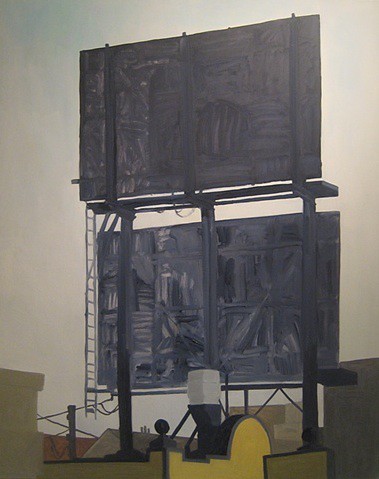http://www.artlog.com/posts/147-the-exceptional-and-the-ordinary
The Exceptional and the
Ordinary
A-J Aronstein

Robert Bills Contemporary’s subterranean location offers much needed relief from humid July afternoons in Chicago. Located ten steps below street level in the city’s West Loop district, the gallery has had a busy spring, winning attention at NEXT 2011 and scoring hometown praise from art critic Lauren Viera at the Tribune. In her review of Exploding Faces [Confining Spaces] – an exhibition of work from Second City-based artists Nathan Vernau, Tiphanie Spencer, and Steven Frost – Viera said that RBC had “redefined” the concept of the group show. Vernau will open the fall season with a solo show in September. But as the gallery looks to build on its recent successes and put a punctuation mark on the summer, it has turned to two native Chicagoans with sharply different perspectives on what constitutes the “ordinary.”
The Exceptional Ordinary, which opened last Friday, features paintings from Gwendolyn Zabicki and Sioban Lombardi. As with Exploding Faces [Confining Spaces], the virtue of this show rests in its ability to foster an unexpected conversation between the works, exposing a shared line of inquiry that would otherwise remain obscured by stark formal and thematic differences. Both Zabicki and Lombardi probe how we conceive of ordinariness, but they do so from different perspectives. Zabicki’s work recontextualizes the apparently banal or mundane space of everyday routine, while Lombardi is more interested in traumatic experience and its influence on memory. These different approaches enliven a conversation about how perception and memory influence what we think of as the relationship between the exceptional and the ordinary.

Gwendolyn Zabicki, Double Billboards. Courtesy of Robert Bills Contemporary.
"Zabicki’s canvases cultivate what might at first seem like a straightforwardly Midwestern sensibility. Her pleasantly structured scenes rely on a quick painterly style reminiscent of the Ashcans, enlivening prairie landscapes, urban scenes, and still-lifes of familiar household objects. Yet her striking cityscapes do not just portray mundane everyday scenes. Rather, they highlight the fact that rich and complex (though often unseen) spaces and objects always underlie the visual fabric of ordinary movement through the city. Billboards and Double Billboards expose the intricate iron latticework and architectural geometries on the reverse of two large signs. Zabicki literally reverses our typical engagement with the billboards by painting their skeletons. Instead of advertising messages or flashy sales pitches, we now notice an image that escapes our ordinary attention in the urban environment. We see the city that hides beneath our everyday surface engagement with it: an intricate set of ironwork structures, infrastructures, and utilities.
In other words, the exceptional for Zabicki is that which, thanks to the ability of routine and repetition to dull our visual attention, lies outside our ordinary experience. In her domestic scenes, she explores this idea on a smaller scale, painting leftovers, empty rooms, and waste bins. These close-ups allow viewers to focus on the plastic folds in a garbage bag, the way light strikes appliances in an empty room, and the melancholy sagging of a cherry pie under glass. The paintings don’t elevate or anthropomorphize objects. They simply ask us to notice what is always already in front of us, but is pushed to the background of our conscious attention."






